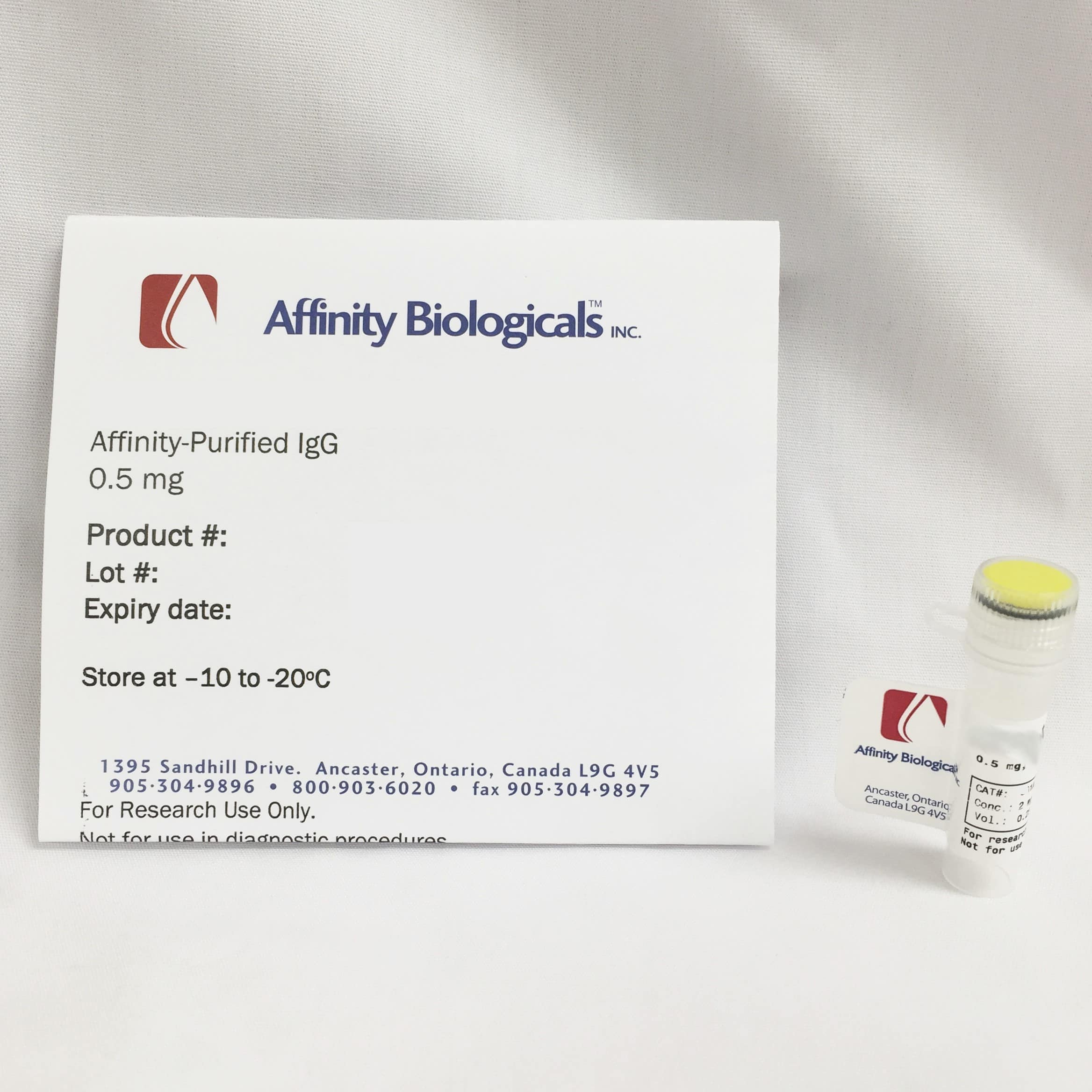Prothrombin Fragment – 1 Polyclonal Antibody – Affinity Purified
AntibodiesAffinity’s Prothrombin Fragment – 1 Polyclonal Antibody – Affinity Purified is the highest level of our Prothrombin Fragment – 1 antibody family. During the Antigen Affinity Purification process the IgG has had any non-specific immunoglobulin fraction eliminated which enriches the specificity of the remaining immunoglobulin towards the target antigen. The result is a very high-purity product with a substantially higher titre than whole or purified IgG. Our Prothrombin Fragment – 1 Polyclonal Antibody – Affinity Purified is provided in a solution of HEPES buffered saline containing 50% glycerol (v/v) and is intended for applications such as immunoblotting, immunostaining of cells and several types of immunoassays where the higher signal-to-noise ratio achieved with this enriched product is required.
Host Animal: Sheep

Specifications
Storage and Shelf Life
Storing
between -10°C and -20°C
Type
Frozen
Expiration
Please inquire
Available Formats
| Cat # | Format |
|---|---|
| SAFII-F1AP |
1 x 0.5 mg |

